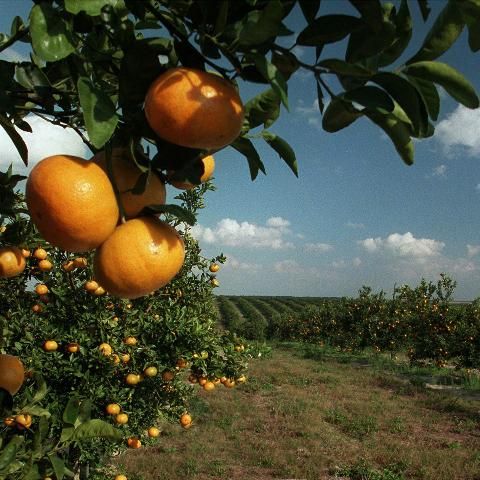A survey of Florida citrus harvesters was conducted in May/June 2015 to collect data on harvesting charges during the 2014/15 season. A total of twelve harvesters located in the Central (Ridge) and Southwest Florida citrus production regions participated in the survey. Six harvesters provided data on processed fruit only, while the other six provided data on both fresh and processed fruit charges. The average and range of the harvesters' responses were computed to obtain the estimates presented below. It is worth noting such estimates corresponded to citrus harvesting charges, not costs.

Citrus harvesting charges are classified into picking, roadsiding, and hauling. The picking charge is for removing the fruit from the tree. The roadsiding charge is for transporting the picked fruit to the flatbed truck or trailer and for costs related to fruit pallet boxes or tubs; ladders; and workers' transportation, payroll taxes, and insurance. Picking and roadsiding charges typically increase after May 15th, mainly as a consequence of the beginning of the harvesting season of other crops, which reduces the supply of harvest labor. The hauling charge is associated with transporting the fruit from the field to either a packinghouse (in the case of fresh fruit) or a processing plant (in the case of fruit for juice).
Table 1 summarizes the harvesting charges for citrus during the 2014/15 season. This includes the average and the range of picking and roadsiding charges by variety and type of fruit (fresh versus processed), as well as the average hauling charges for all varieties by distance. In all but two cases, average picking and roadsiding charges for fresh fruit are lower than those for processed fruit. A possible explanation for this seemingly counterintuitive finding could be due to the impact of Huanglongbing (HLB or citrus greening) on the Florida citrus industry. As the impact of HLB increases, only those blocks with trees with lower infection levels will yield fruit that qualifies for the fresh market. Since healthier trees are likely to have more fruit, the cost of harvesting such blocks is lower. Contrastingly, as the number of blocks with trees that have a higher infection level increases, and the volume of fruit they yield decreases, harvesting costs of such blocks will increase.
The Florida citrus industry currently faces the challenges imposed by HLB: decreasing crop yields and production, lower quality fruit, and increasing cost of production. On-tree prices are the basis for establishing the economic return to citrus growers. Therefore, the usefulness of these estimates resides in providing the basis for computing on-tree prices from delivered-in prices. That is, the estimates herein document the harvesting charges and contribute to computing the change in growers' economic returns as the industry adapts to remain profitable.